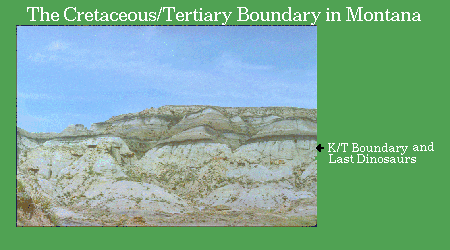Introduction to the Mesozoic Era
248 to 65 Million Years Ago


The Mesozoic is divided into three time periods: the Triassic (245-208 Million Years Ago), the Jurassic (208-146 Million Years Ago), and the Cretaceous (146-65 Million Years Ago).
Mesozoic means "middle animals", and is the time during which the world fauna changed drastically from that which had been seen in the Paleozoic. Dinosaurs, which are perhaps the most popular organisms of the Mesozoic, evolved in the Triassic, but were not very diverse until the Jurassic. Except for birds, dinosaurs became extinct at the end of the Cretaceous. Some of the last dinosaurs to have lived are found in the late Cretaceous deposits of Montana in the United States.
The Mesozoic was also a time of great change in the terrestrial vegetation. The early Mesozoic was dominated by ferns, cycads, ginkgophytes, bennettitaleans, and other unusual plants. Modern gymnosperms, such as conifers, first appeared in their current recognizable forms in the early Triassic. By the middle of the Cretaceous, the earliest angiosperms had appeared and began to diversify, largely taking over from the other plant groups.
Click on the buttons below to learn more about the Mesozoic Era.



 |
Mesozoic to visit its exhibit! The chart at left shows the three major subdivisions of the Mesozoic Era. This chart is mapped to take you to each of these subdivisions. The Mesozoic Era occurs between the Paleozoic and the Cenozoic. |
|
UCMP Special Exhibit: Dinobuzz
Explore current and exciting research into the biology of dinosaurs. Were they warm-blooded? Why did they go extinct? Are dinosaurs related to birds, or are they reptiles? All this and more! |
Find out more about the Mesozoic paleontology and geology of North America at the Paleontology Portal.
